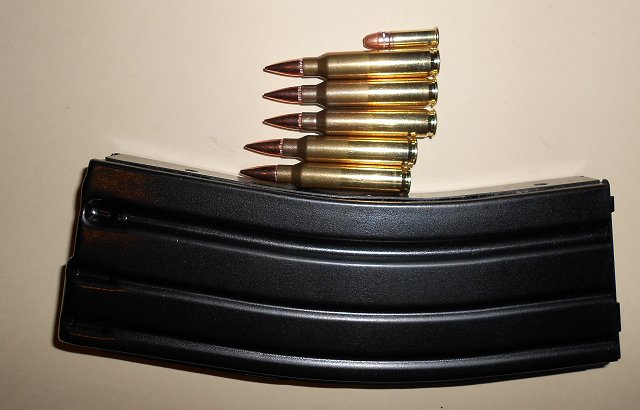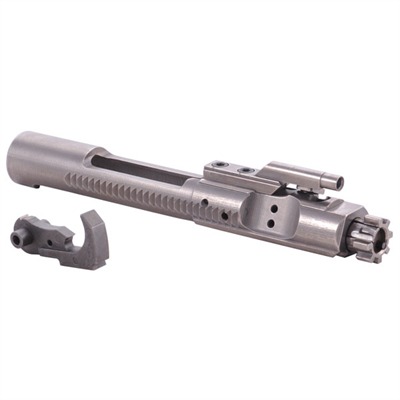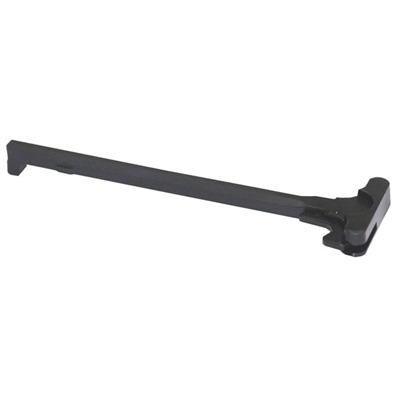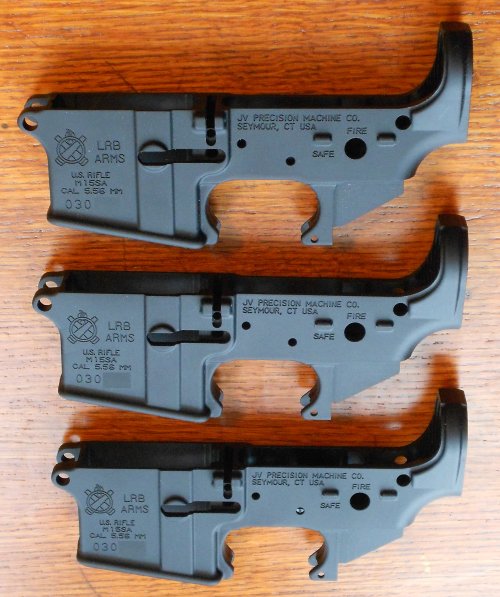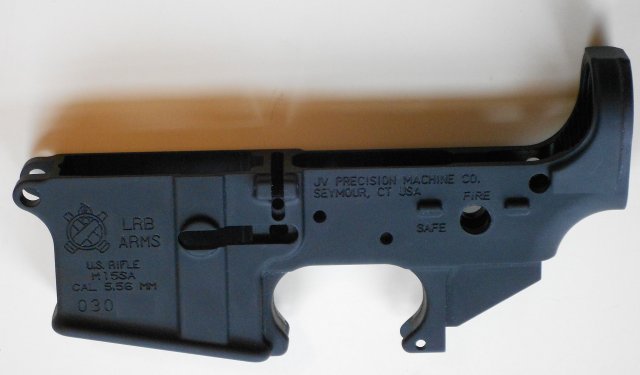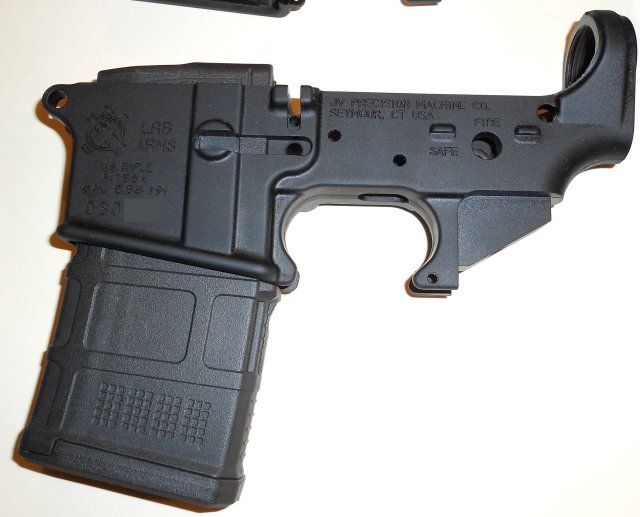Eugene Stoner (1922-1997), along with John Moses Browning and Mikhael Kalashnikov, is often regarded as one of the most successful gun designers of the twentieth century. In 1954, as the chief designer at ArmaLite, he designed a series of prototype small arms, including the AR-3, AR-5, AR-9, AR-10, AR-11 and AR-12. Few of these were successfully produced except for the AR-5 survival rifle, which was adopted by the US Air Force. The civilian version of the AR-5 was the AR-7 and has sold quite well.

AR-7 Survival rifle
Image from HERE

AR-7: The entire action is broken down and fits in the stock
Image from HERE
The AR10 was submitted for rifle evaluation trials to the US Army but due to a number of reasons, the M14 was chosen.
Quote from HEREAt the request of the U.S. military, Stoner's chief assistant, Robert Fremont and Jim Sullivan designed the AR-15 from the basic AR-10 design, scaling it down to fire the small-caliber .223 Remington cartridge. The AR-15 was later adopted by United States military forces as the M16 rifle.[2][3]
After ArmaLite sold the rights to the AR-15 to Colt, Stoner turned his attention to the AR-16 design. This was another advanced 7.62 mm rifle but used a more conventional piston and a number of stamped parts to reduce cost. This weapon saw only prototype development but adaptation to .223 resulted in the somewhat successful and often imitated Armalite AR-18.[2]
Stoner left ArmaLite in 1961 to serve as a consultant for Colt. He eventually accepted a position with Cadillac Gage where he designed the Stoner 63 Weapons System.[2] This was a modular weapons system that could be reconfigured to be a standard automatic rifle, a light machine gun, a medium machine gun, or a solenoid-fired fixed machine gun. The Stoner Weapons System used a piston-operated gas impingement system, though Stoner himself believed direct gas operation was the ideal method for firearms. Once again, Robert Fremont and Jim Sullivan would take a Stoner design and redesign it for the .223 Remington cartridge, to create the Stoner 63 Weapons System.[4]
Stoner worked for TRW by designing the TRW 6425 25 mm Bushmaster auto cannon, which was later manufactured by Oerlikon as the KBA.[1]
He co-founded ARES Incorporated of Port Clinton, Ohio, in 1972, but left the company in 1989, after designing the Ares Light Machine Gun, sometimes known as the Stoner 86. It was an evolved version of the Stoner 63. At Ares, he also designed the Future Assault Rifle Concept (FARC).[1]
In 1990, he joined Knight's Armament Company (KAC) to create the Stoner Rifle-25 (SR-25), which currently sees military service as the United States Navy Mark 11 Mod 0 Sniper Weapon System. While at KAC, he also worked on yet another version of the Stoner Weapons System, called the Stoner 96. Among his last designs were the SR-50 rifle and the Colt 2000.[5]
Other weapons designed by Eugene Stoner:
Armalite designs
· AR-3
· AR-7
· AR-9
· AR-10
· AR-11
· AR-12
· AR-15
· M16 rifle
· AR-16
· AR-18
other designs
· Stoner 62 / Stoner 63
· TRW 6425 25 mm “Bushmaster” auto cannon
· ARES FMG (Folding Machine Gun)
· Ares Light Machine Gun (A.K.A. the “Stoner 86”)
· Advanced Individual Weapon System (AIWS)
· Future Assault Rifle Concept (FARC)
· SR-25 (U.S. Navy Mark 11 Mod 0 Sniper Rifle)
· SR-15
· Stoner 96
· SR-50
So why are we talking about Eugene Stoner?
Even though Colt produced the M16 for the US armed forces, we must remember that the father of the M16 was Eugene Stoner.
The M16 is a select fire rifle. Colt also produced the AR-15 as a semi automatic version of the M16. Colt's AR-15 was designated for civilian sales.
The AR15 is a modular, gas operated, semi automatic rifle chambered for the 5.56 X 45mm cartridge.
In future posts in this thread, I will attempt to show you how the rifle most associated with Stoner's name (the AR-15) gets built from its constituent parts into a firing rifle.
I hope you will follow along with my build and I hope others will add valuable info to this thread.








